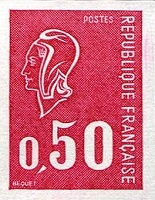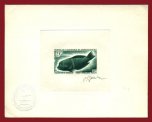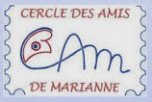
All the stamps 0,50F Marianne de Béquet produced in form of sheets were made using the line-engraving process (cf. the article Genesis of the stamp for a description of this process) on three types of printing machines: the TD3, TD6 and RGR presses.
For each press, we will describe its principle restricted to the essentials (for a more detailed study, readers are referred to the web site LES BARRES PHOSPHORESCENTES ET LEURS VARIETES or to the blog Papy24). Then, we will develop the 0,50F Marianne de Béquet stamp production achieved on each kind of press.
However, we would like first to recall the definition of two words usually used by philatelists and which are perhaps not as simple as it might be thought: the notions of printing and of part of printing, which were introduced by the baron de Vinck de Winnezeeler in the 1930s.
We call printing the period during which a given form cylinder was used every day, continuously, on a given press. Every change of press for a given form cylinder gives rise to a new printing. There will be a change of printing, for a given face value printed on a given press, when the interruption will have lasted at least one month and if this form cylinder was not used on another press during this period.
Parts of printing are determined:
- By a frank interruption of printing of at least 8 days, if other face values were not printed on the same press during the interruption;
- By an interruption of any duration if there was impression of other face values on the concerned press during the interruption.
 Site map
Site map
 Contact
Contact
 Legal notices
Legal notices
 Editors area
Editors area


2015-2017 © Etude monographique du 0,50F Marianne de Béquet - All rights reserved


 Home
Home





